Learn how to make Coconut Butter at home with this easy process. All you need for this coconut butter recipe are shredded coconut and a high-speed blender or food processor. Homemade coconut butter is a fantastic spread and baking ingredient.
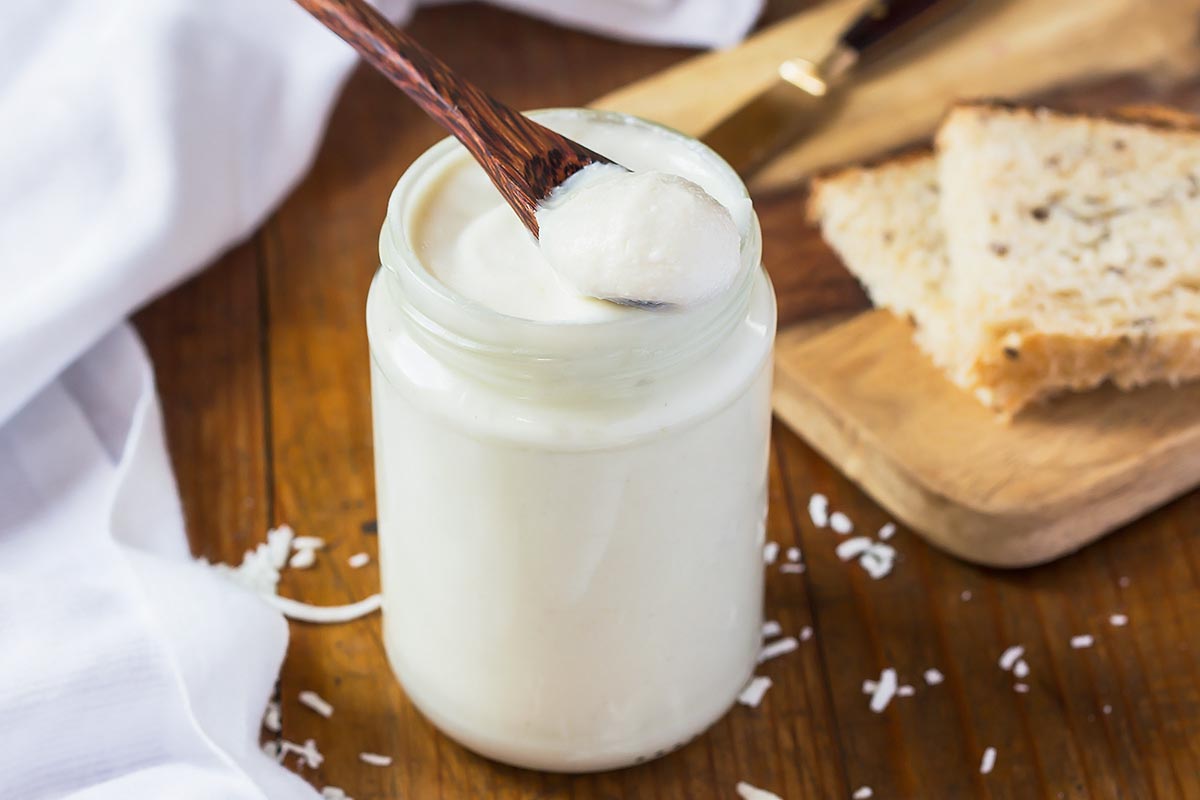
What is coconut butter?
Coconut butter is the ground up dry meat of mature coconuts. It is similar to peanut butter, where the ground peanuts turn into a luscious nut butter. In the same way to peanut butter, shredded coconut (or coconut flakes) break down and release their oils to turn into a spreadable, creamy coconut nut butter. However, instead of having a sticky nature like peanut butter, it is creamier and velvetier.
It is highly nutritious containing lauric acid. It is a fatty acid that works very well to reduce inflammation and aid the immune system, existing in coconut oil as well which is likely a reason it is so soothing for dried skin.
You can purchase store bought coconut butter at the grocery store or health food stores, but it can be expensive. As a result, having a coconut butter recipe in your back pocket can be a tremendous help if you are on a budget. Moreover, it is very easy to make.
This butter has a multitude of uses at home. While you may prefer to simply eat it from the jar, you can also stir it into coffee or hot chocolate, especially if you prefer to have a vegan alternative to dairy. It is also wonderful blended into smoothies for some added richness, spread on bread, added to fudge or dessert recipes, or even turn it into an egg-free mayonnaise.
What is the difference between coconut oil and butter?
While coconut oil is the isolated fat from mature coconuts, coconut butter also includes coconut fiber along with the coconut oil. Producers make coconut oil in a couple of methods called wet processing or dry processing. The wet processing method involves coconut milk. The coconut milk is a combination of coconut oil and water, and as a result, the process breaks up the emulsion in order to extract the coconut oil alone. Dry processing is the most common and beneficial method. It involves removing the meat from coconuts and drying it before dissolving it with solvents to remove the coconut oil.
The process of preparing coconut butter is quite different from coconut oil. It involves blending shredded dried coconut until the oils release and the mixture becomes creamy and smooth. The process is much easier than with coconut oil and coconut butter is a little more versatile. In fact, if you have a recipe that requires a can of coconut milk, you could blend a little coconut butter with water to come up with a replacement.
Another difference between coconut oil and butter is that the oil turns into a clear liquid when melted. Meanwhile, coconut butter is opaque and creamy when warm but also turns thick and solid at colder temperatures.
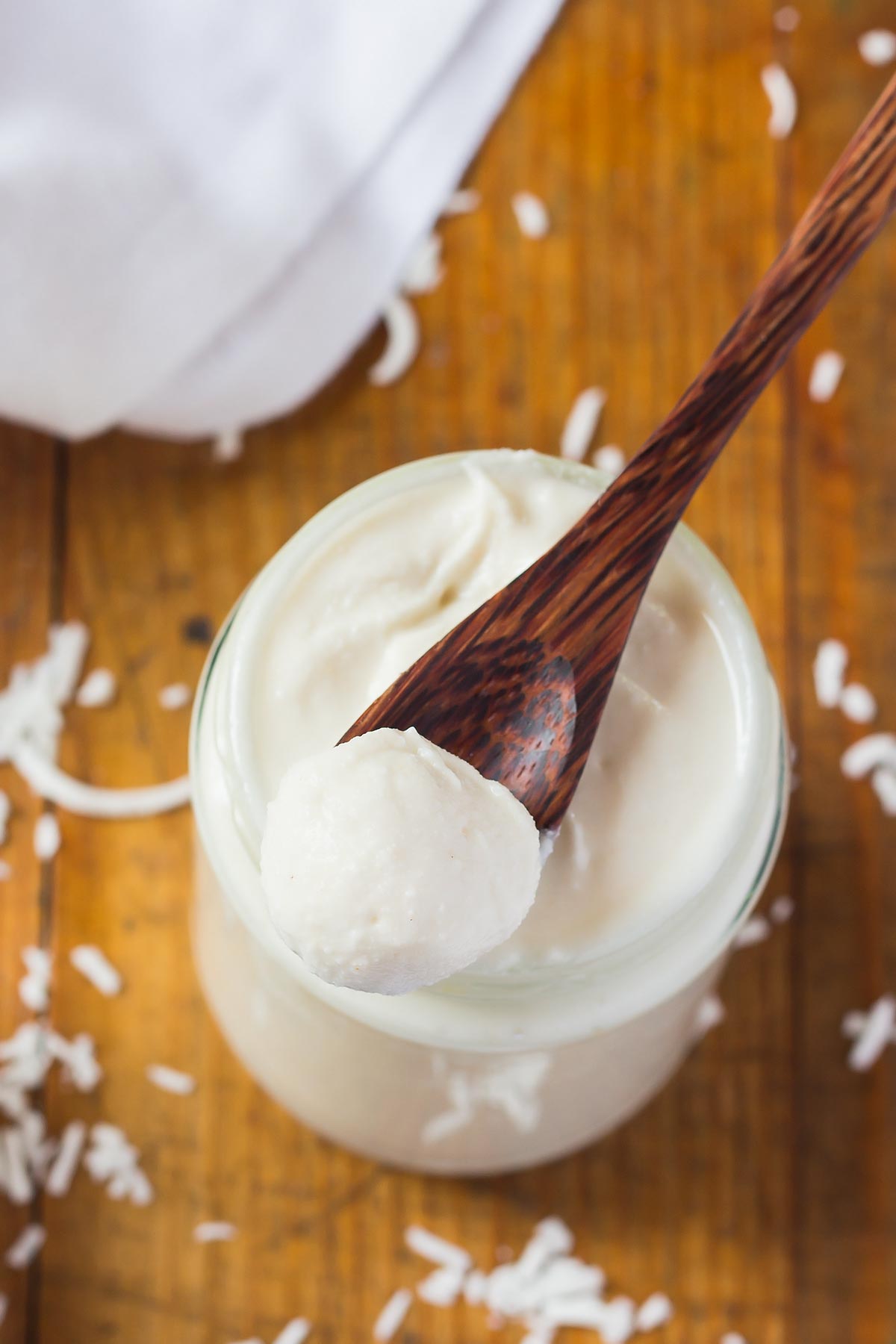
Are coconut butter and coconut manna the same?
Yes! Coconut butter and coconut manna refer to the same substance and the terms can be used interchangeably.
How to make coconut butter from fresh coconut
For this coconut butter spread all you need are shredded or coconut flakes and a high-speed blender or a food processor.
If you are starting from scratch all the way from the whole coconut, you'll first have to grate or shred the fresh coconut meat and let it dry. You can dry the fresh coconut either on a baking sheet in the oven at the very lowest temperature or even outside in the sun. Of course, you will want to wait for a particularly hot and sunny day before drying the coconut into dried flaked coconut in direct sunlight.
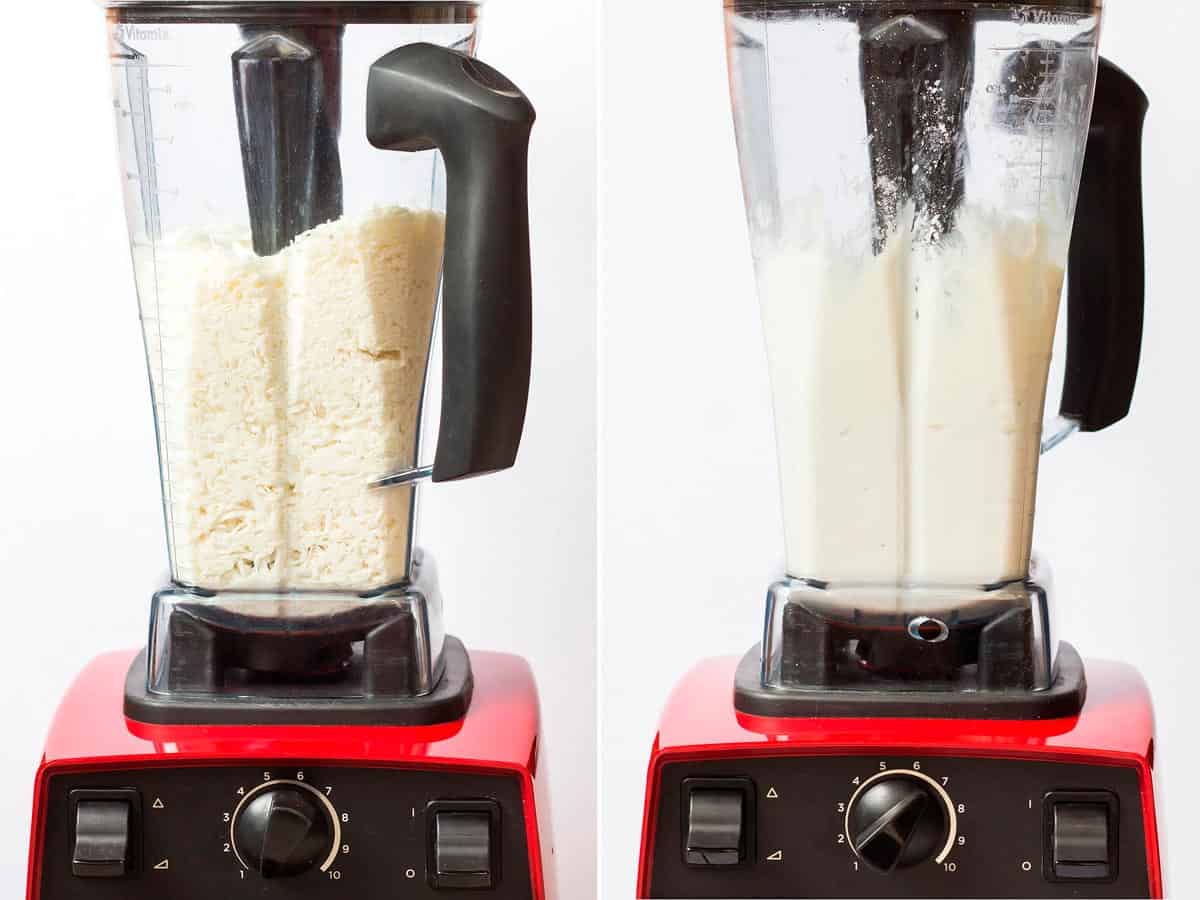
This post contains affiliate links
Fill the blender jug or food processor with the shredded unsweetened coconut - it should be at least halfway full. Turn on the machine and grind the coconut meat down to smooth and creamy consistency. The process is relatively quick but may involve having to stop it and scrape down the sides to ensure that the mixture blends evenly.
How to make coconut butter in a blender
When using a blender, you really need a strong high-speed model. With my Vitamix blender, I also utilize the tamper to keep pushing the shredded coconut down and into the blades of the blender.
When I use my Blendtec blender to make coconut butter, I use the twister jar. During processing, I twist the lid so that the prongs keep moving the shredded coconut around and into the cutting blades.
At first, the unsweetened shredded coconut breaks down into a fine powder. Then, as the oil gets released with the heat from the blender the mixture turns thicker and creamier until it finally resembles a thick creamy liquid.
The whole process of blending coconut butter in a blender takes only about 1 minute. If you do not have a high-speed blender, the blending process may take a little longer, but it should get there eventually.
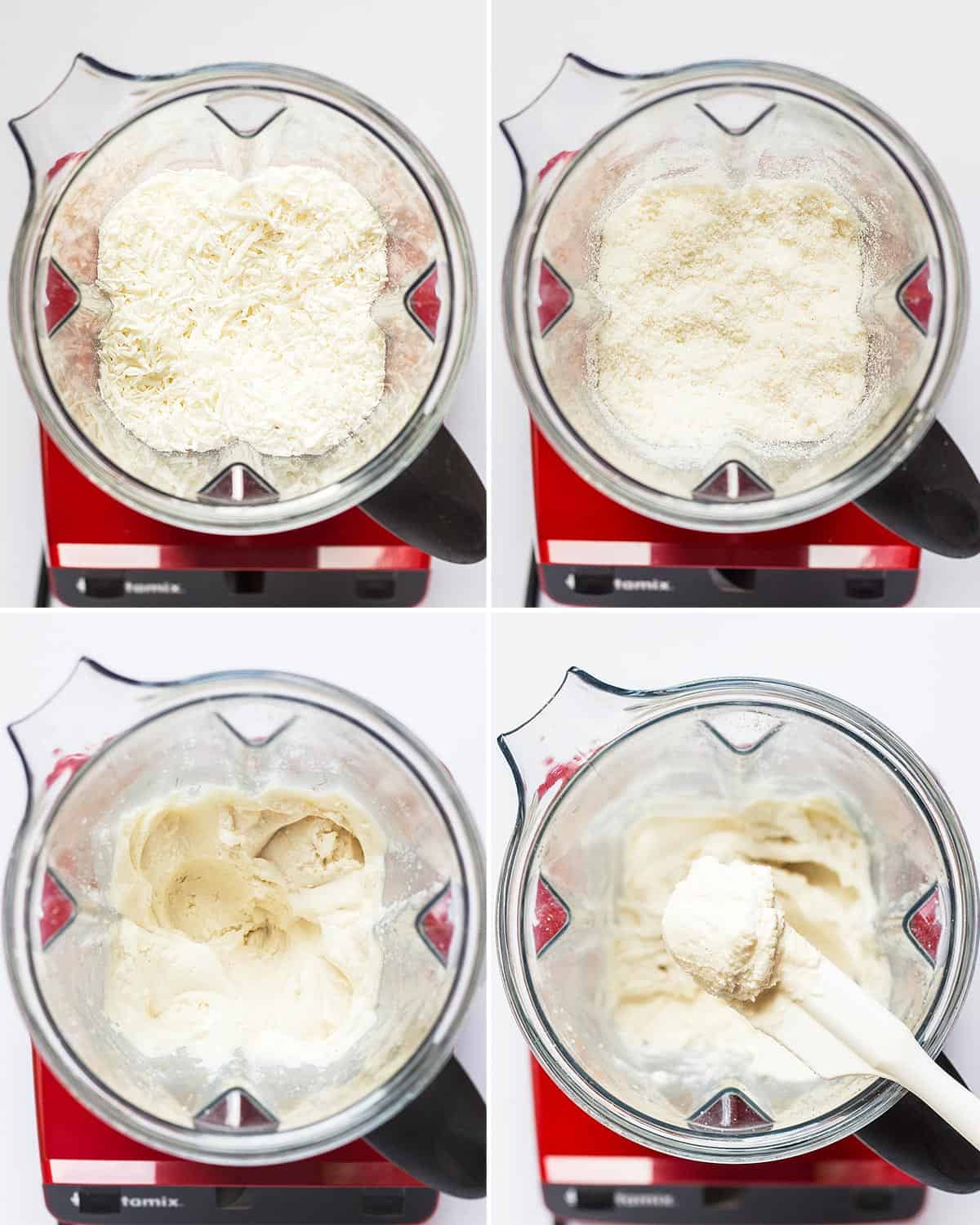
Making Coconut Butter in a Food Processor
If you don't have a high-speed blender, you can also use a food processor to make coconut butter. However, it will take much longer to come to a really smooth consistency at about 15-20 minutes. You will also have to stop the food processor from time to time to scrape down the sides. You will also have to be careful not to overheat and burn out your food processor's motor. Stopping in between blending and scraping down the sides should help ensure your food processor doesn't overheat.
I haven't tried this before, but if desired, you could even attempt to use an immersion stick blender. In this case, place the coconut in a large bowl and gradually pulse the mixture with the stick blender. This may take a little more time as well since a stick blender won't have the same kind of coverage as an upright blender or food processor.
How to Store Coconut Butter
Pour the finished coconut butter into a glass jar and store at room temperature. The glass jar of coconut butter will thicken and solidify as it cools to room temperature.
To prevent the oils from separating and settling at the top, stir the jar of coconut butter once in a while as it cools. It will keep well for several months although it may not last that long. If you find your family uses a lot of coconut butter, you may want to do a double batch, although you would have to blend half at a time. However, if you or your family don't go through as much of it, making a single batch is best in order to enjoy it at its freshest.
Coconut Butter Variations
Now that you know how quick and simple it is to make coconut butter, you may be up for trying one of these delicious variations:
Coconut Peanut Butter
Add roasted peanuts to the shredded coconut and proceed as outlined above to make a delicious coconut peanut butter spread. You can do the same with almonds or cashews for almond coconut butter and cashew coconut butter.
Chocolate Coconut Butter
Add cocoa or cacao powder to the finished coconut butter in the blender, and turn on again to combine the ingredients into chocolate coconut butter. Or add cocoa to the peanut coconut blend for yummy chocolate coconut peanut butter.
Toasted Coconut Butter
If you look closely at the video below, you can see that the finished coconut butter has an off-white, almost golden colour. It's because I used toasted shredded coconut in that batch - by accident.
I made my own shredded coconut from fresh coconuts and had the oven a little too warm for drying the shredded coconut. So it turned into toasted coconut which actually gives the coconut butter a deep and rich flavour.
I highly recommend giving toasted coconut butter a try also.
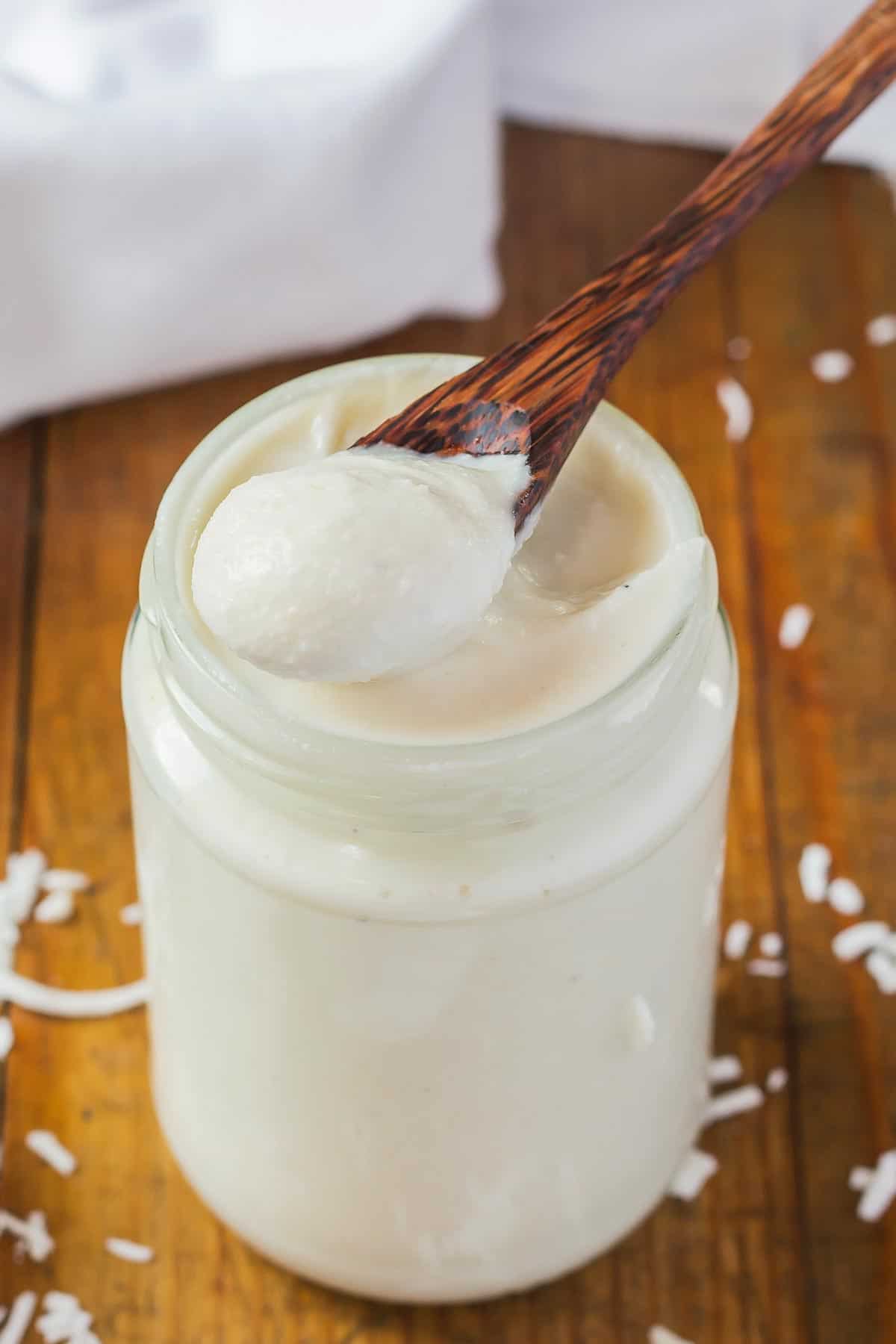
Ways to Use Coconut Butter
We like to use coconut butter spread on slices of homemade bread just like you would with peanut or almond butter. And because of coconut's natural sweetness, I don't feel the need to drizzle honey or add jam with it.
Baking with coconut butter is another common way to use it. I love this healthy fudge recipe made with coconut butter. It is chocolatey and decadent, but much healthier than traditional fudge as it doesn't contain any refined sugar or corn syrup. Fat Bombs made with coconut butter are also da bomb! These include all kinds of tasty ingredients from walnuts to chia and hemp seeds. If you need fuel for the brain in the afternoon, these fat bombs are a healthy snack and are the perfect use for this homemade coconut butter.
It is also not uncommon for coconut butter to be added into Indian, Caribbean, or Southeast Asian recipes for some added richness. Instead of adding coconut milk to your next curry, consider stirring in some spoonfuls of coconut butter to add some creaminess. It will also add some fiber to whatever you are cooking due to the coconut meat content. Here are some other recommendations for how to use this coconut butter recipe:
Savoury Ideas
- Dollop onto acorn squash pieces or sweet potatoes with a little cinnamon instead of using butter. This will be great for when you are serving vegan friends and family for a dinner party.
- Stir into stir-fries or curries.
- Add to creamy chicken dishes as a replacement to heavy cream.
- Blend with some coconut cream, shredded cucumber, mint, parsley, lemon, and garlic for vegan tzatziki.
- Add to a lemon dressing with olive oil, lemon juice, lemon zest, garlic, and salt to make it a creamier dressing. This would be excellent for other vinaigrettes as well.
- Make a dressing with coconut butter, turmeric, ginger, lime juice, salt, and pepper to add to a salad of shredded carrots and dried currants.
- Blend with almond butter, hot water, soy sauce, ginger, garlic, and sriracha for a creamy Asian dressing to toss with noodles, bell peppers, and thinly sliced red cabbage.
- Stir into pureed vegetable soups or vegan corn chowder to add some creaminess.
Sweet Ideas
- Stuff into dates for a healthy snack.
- Blend into smoothies.
- Add to oatmeal with a drizzle of maple syrup.
- Blend it with a little maple syrup for a quick and easy vegan frosting.
- Beat with some whipped coconut cream and layer with berries and granola for a breakfast parfait.
- Drizzle on pancakes or waffles before topping with tropical fruit.
- Blend with frozen fruit and coconut yogurt before freezing into ice pops.
Where to Buy Coconut Manna
If your blender or food processor isn't up for the task of making coconut butter, you can of course also go for store-bought coconut butter. It is relatively easy to find online, although you may also be able to locate it in your local natural food stores or wherever your grocery store has coconut oil. Some bulk food stores carry it as well.
Other Recipes You'll Love:
- How to Make Homemade Peanut Butter
- Spiced Plum Butter
- Cashew Butter
- Chia Egg Replacer
- Easy Swiss Meringue Buttercream
Recipe
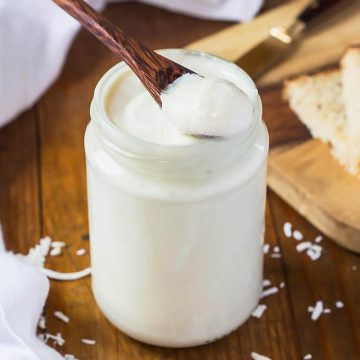
Homemade Coconut Butter
Ingredients
- 3 cups shredded coconut or flakes (unsweetened)
Instructions
- Fill the shredded coconut into your high-speed blender. It should be at least half way full.
- Close the lid and turn on the blender. Work your way up from lowest to higher speeds.
- Use the help of a tamper or twister jar lid to move the shredded coconut around and down into the blades.
- In about 1 minute the shredded coconut will first turn into a fine powder, before breaking down into creamy thick coconut butter.
- The process takes much longer in a food processor (15-20 minutes). And you will need to take breaks to scrape down the sides of the food processor.
- Store the finished coconut butter in a jar at room temperature. It will get thicker and harden at cooler temperature. Place the jar in hot water if you need to soften the coconut butter
Nutrition
Pin this Homemade Coconut Butter tutorial for later?
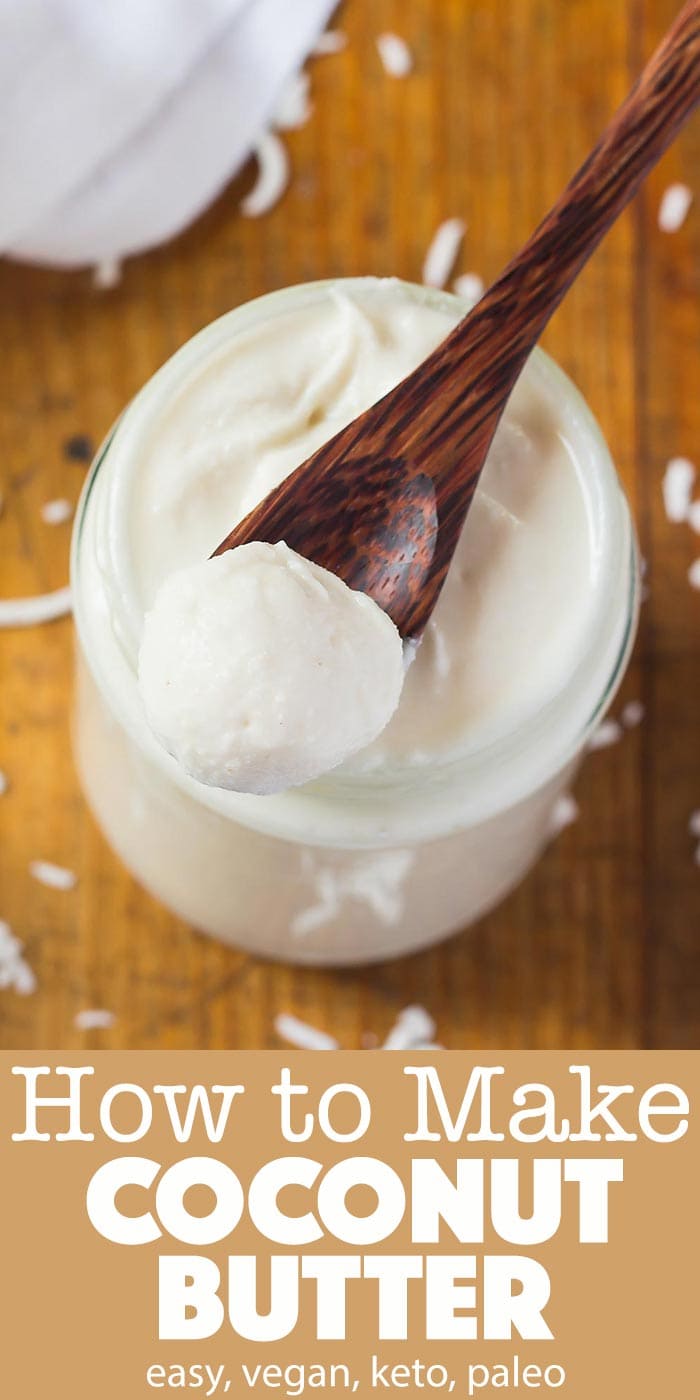
Random Questions
Coconut butter is made from the ground-up dry meat of mature coconuts. It includes coconut fiber along with the coconut oil, providing a creamy and versatile spread.
Fresh coconut butter can be stored at room temperature in a glass jar for several months, typically maintaining its quality for a considerable period. Regular stirring can prevent oil separation.
While coconut oil and coconut butter differ, you can still use coconut oil as a replacement for coconut butter in certain recipes. However, be mindful that the consistency and texture might be affected.
A high-speed blender or a food processor is ideal for making coconut butter. Brands like Vitamix or Blendtec are suitable for quickly achieving a smooth and creamy consistency.


Josephine
I came across your website because I have a few very large coconuts that I purchased recently. I emptied and drank the milk (yum!) bit now that I have the meat, I never knew just what to do with them except to shred them and make coconut macaroons or coconut shrimp, that is, until o came across your website!!
I was trying to “dry” the shredded coconuts out in my toaster oven at 275 degrees but they seemed to have “toasted” (turned nice golden brown) instead of just “drying out.” In my next batch, I lowered the temp to 250. Will my “coconut butter” taste any differently or the consistency be different if my dry coconuts are golden brown? I’m really looking forward to making first coconut butter! Thank you so much!!
Regina | Leelalicious
The golden brown coconut will make a delicious toasted coconut butter. The flavor is nuttier and really flavorful. In my video you can see that the same thing happened to me. The finished butter will have a golden, creamy colour.
Rashmi C
how long do you bake the fresh coconut for before you can blend it? and at what temperature please?
Regina | Leelalicious
Use your lowest possible heat setting for about 30 minutes. Stir occasionally until you notice the coconut is no longer moist. On warm days, you could even dry it outside in the sun.